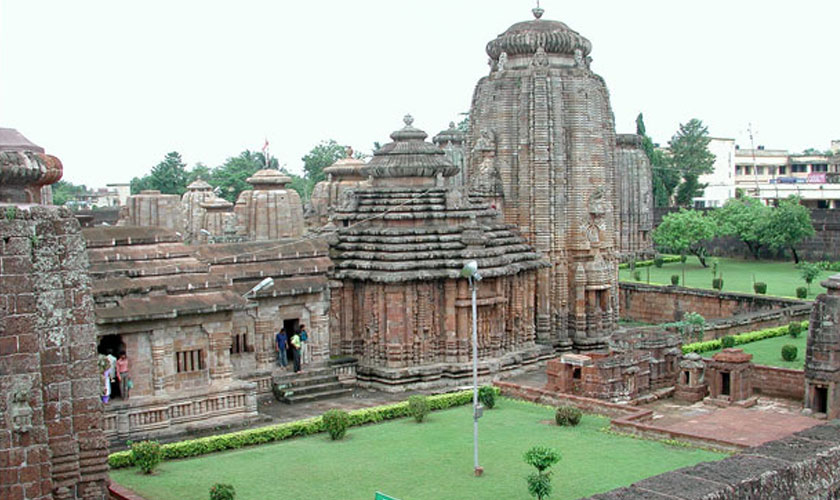Lingaraj Temple – Sacred Place in Bhubaneswar
Lingaraj Temple History
Lingaraj Temple is one of the oldest Hindu temples in Bhubaneswar, Odisha. The temple is dedicated to Lord Shiva, and daily, hundreds of devotees visit the temple. Lingaraja means the king of Lingam. At first, the devotees worshipped the Lingam as Kirtivasa and Harihara and finally referred to Tribhuvaneshwara, the master of heaven, earth and the netherworld. Here Goddess Parvathi receives the rituals as Bhuvaneshvari.
According to some Sanskrit texts, the temple was constructed by Lalat Indu Keshari, who ruled the region from 615 to 657 CE.

The present form was constructed in the eleventh century CE. During that time, the temple’s sanctum, temple tower and assembly hall for the devotees were erected. King Salini’s consort built the ‘natamandira’ between 1099 and 1104 CE. In the natamandira, the dancers perform classical dances with the themes of epics. In the beginning, the temple was the place for worshipping Lord Vishnu and Shiva. However, the kings of the Ganga Dynasty were followers of Vaishnavism, so they built the Puri Jagannath Temple in Puri. According to Brahma Purana, the Somavanshi King Yayati I built the temple from 1025 to 1040 CE. Later king Jajati Keshari shifted his kingdom to Bhubaneswar from Jaipur. Subsequently, many kings donated jewels, gold coins, land and villages to the temple to develop the temple. Some of the present historians believe that Ananta Kesari and Udyota Kesari, the sons of Yayati II, constructed the temple. What may be the story of the construction, the temple became a place for pilgrimage from all over India.
Lingaraj Temple Architecture
The 13th-century Ekamra Purana narrates that Bhubaneswar was famous as Ekamra Kshetra, where Lord Lingaraj was under a mango tree. The devotees here worship Hari Hara, the combined form of Shiva and Vishnu. The temple was constructed in Kalinga Architecture, and the central tower is at the height of 55 metres. The Lingaraja Temple faced to East and was built with sandstone and laterite. The entrance gates were carved in Sandlewood.
Along with lord Lingaraja, another 50 other shrines are located on the compound wall of the temple. Every day the priests perform the rituals according to the ‘Sastras’ and celebrate the festivals on a grand scale. Daily around 6000 pilgrims visit the temple to worship Lingaraja. During the festival celebrations, lakhs of people visit the temple.
Legend Behind Lingaraj Temple
According to Hindu legend, an underground river flows under the Lingaraj temple and forms a tank outside the temple called Bindusagar Tank. The devotees believe that water has the unique quality of curing physical and spiritual illness. The pilgrims took a bath in the sacred water and went to pay worship, Lingaraja. The temple is also a symbol of religious harmony. Because during the Bhakti Movement, some differences were raised between the Vaishnavas and Shaivas. Some believe the temple was constructed to reduce the differences between the two sects.
Celebration of Shivaratri
On the festival day, the devotees follow a full day of fasting and visit the temple to offer bel leaves to Lingaraj. The festival celebrates at night, so all the devotees spend the night before the presence of God and pray to him all night. Later, the devotees lit a massive lamp on the temple’s spire and broke the fasting. On another side, the pilgrims went to the Mahanadi river, dipped into the water, and walked to the temple to perform the rituals with the water. Many people visit to see this sacred ritual every year.